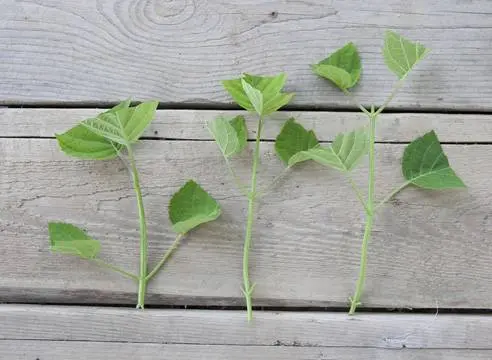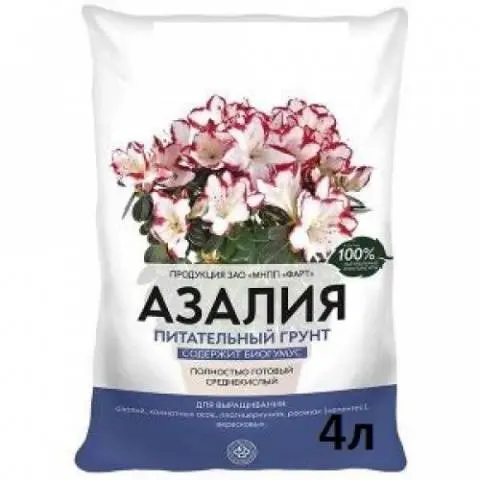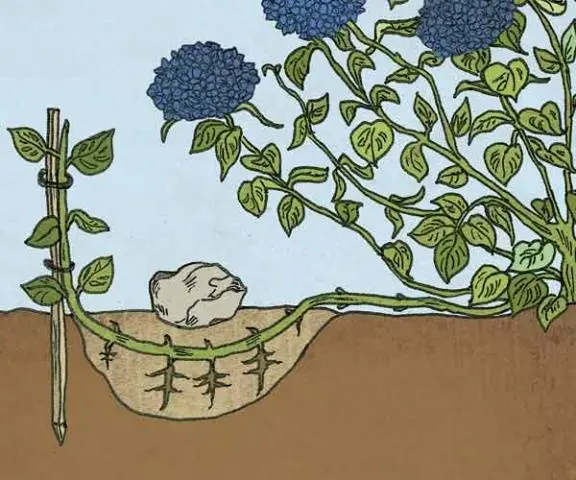Contents
A lush hydrangea bush, strewn with bright clusters of flowers, makes many flower growers want this regal beauty to grow on a personal plot. And if it is not difficult for professionals to propagate hydrangea, then beginners have a lot of questions. What are the ways to propagate hydrangeas in the fall? What is the best and most efficient method? When is the best time to do this: spring, summer or autumn? What rules must be followed to be successful? You will find answers to these and many other questions in this article.
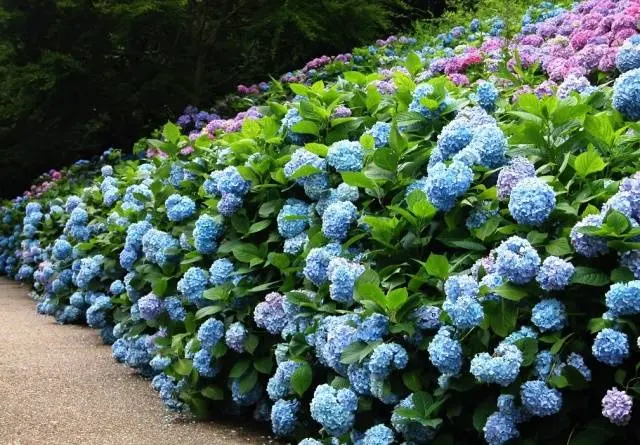
What are the methods of propagation of hydrangea
Like many garden flowers and shrubs, hydrangea can be propagated in several ways:
- seeds;
- cuttings;
- The division of the bush;
- Drains;
- Children (or shoots).
Each method has both advantages and disadvantages.
For example, when planting hydrangea seeds, one should prepare for the fact that much more care will be required with this breeding method compared to others. Another disadvantage is the low germination of seed material and, of course, there is no 100% guarantee that you will receive the variety that you ordered. Therefore, gardeners prefer to propagate hydrangea by cuttings, dividing the bush or layering. These methods are the best. Moreover, they do not require any skills and abilities. Even a beginner can handle them.
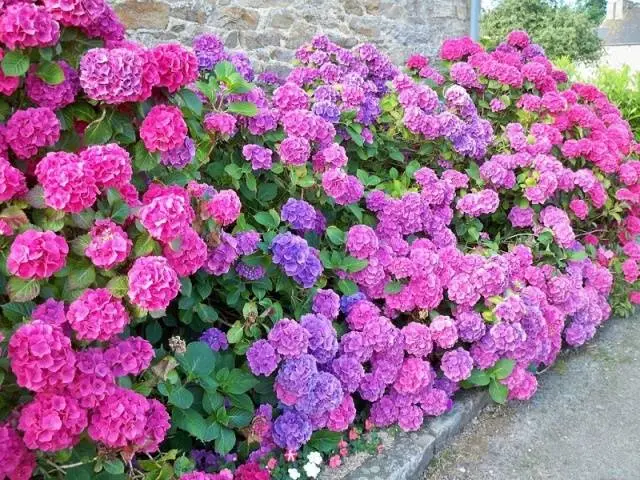
Reproduction of hydrangea cuttings
Propagation of hydrangeas by cuttings is the easiest and most affordable method. When from an 8-10 cm cutting, with maximum love and care, you grow a chic hydrangea bush strewn with bright flowers – is this not a matter of pride? With this method of growing, it is important to take into account several nuances.
Unlike many garden flowers and shrubs, hydrangea can be propagated by cuttings both in summer, from the beginning of July, and in autumn, until the end of September. But in summer, cuttings can be planted immediately in the ground, and in autumn they need to be planted in boxes or containers for rooting at home. All winter, plantings need careful care, and only in spring, rooted seedlings are planted in the garden.

- It is important to carry out all work only with clean, sharply sharpened garden tools.
- You can cut planting material only in cloudy weather or early in the morning – at this time the branches contain a lot of moisture, which is so necessary for this plant. It is strongly not recommended to leave hydrangea cuttings without moisture, even for a short time. Immediately after cutting, they must be put in water.
- When cutting hydrangea cuttings, choose green, non-lignified branches. It is best to cut planting material from the lower side shoots, from the most illuminated side of the shrub.
- The top must be cut off – it is unsuitable for cuttings.

- Chopped hydrangea shoots can be divided into several cuttings. The main thing is that each of them should have at least 2-3 pairs of leaves. The lower pair of leaves must be cut off, but shorten the upper leaves by a third or half. And one more nuance: both sections, upper and lower, must be made at a distance of at least 1 cm from the kidney. It is desirable to make cuts oblique.
- Immediately after cutting, planting material must be placed for 2 hours in a pre-prepared solution. Any stimulant must be added to the water to accelerate root formation – root, heteroauxin or zircon. In this case, the upper cut leaves should not touch the water. Place the hydrangea cuttings in a dark place.

It is undesirable to plant hydrangeas in an open place – the sun’s rays burn the leaves.
- If you do not have a root stimulant, dilute a teaspoon of honey in one glass of water. In this case, callus – growths indicating the beginning of root growth – is formed much faster.
- Immediately before planting, dip the top cut into melted paraffin, wax, or green paint.
- The soil for breeding hydrangeas also needs to be taken care of in advance. The ideal option is a mixture of peat and sand in a ratio of 2: 1. Mix well. If it is not possible to get peat or sand, you can use ready-made soil for growing azaleas. It is perfectly balanced and suitable for rooting hydrangeas.

- Lightly moisten the prepared soil with a sprayer and plant the cuttings to a depth of no more than 2-3 cm. The upper buds with the leaves left should in no case touch the ground. For quick rooting, it is necessary to cover the planted material with glass jars or cut plastic bottles. Each seedling needs to be covered with a separate jar. If you decide not to cover the plantings, then the distance between the cuttings should be 5-7 cm.
- Fill the soil with a small layer of sand – 2-2,5 cm will be enough.
If the hydrangea cuttings are covered with banks, they should be watered at least 1-2 times a week. Banks do not need to be removed when watering. If you left hydrangea seedlings open, then during the day they need to be sprayed with a spray bottle at least twice.

When cutting planting material, keep in mind that young bushes that are not even a year old are still unsuitable for hydrangea propagation. Not only did they not have time to adapt to new conditions, the root system of shrubs is very weak and you can easily ruin the plant.
Rooting of hydrangea cuttings in both cases occurs at least 25-30 days. The fact that all the work was done correctly and the planting material was accepted, you will be prompted first by the swollen upper buds, and subsequently the leaves that appear. Until you see these signs of rooting, it is not recommended to remove the jars from the cuttings.

After the appearance of the first leaves of hydrangea, jars or bottles must be removed. Now until spring, when it will be possible to plant seedlings in the garden, it is necessary to ensure regular watering and spraying of leaves at least 1-2 times a week. During this period, it is important to prevent a sharp temperature drop. A small jump of 5°C-7°C will be enough to kill weak plants.
When spring comes, rooted seedlings are planted on a specially prepared bed for growing or immediately to a specific place.
Before transplanting hydrangea seedlings to a personal plot, they must be gradually “hardened”. For this, containers or boxes with landings are taken out daily, first for an hour. Gradually, the time of the “walk” should be increased. After a week, young shoots can be planted in open ground.
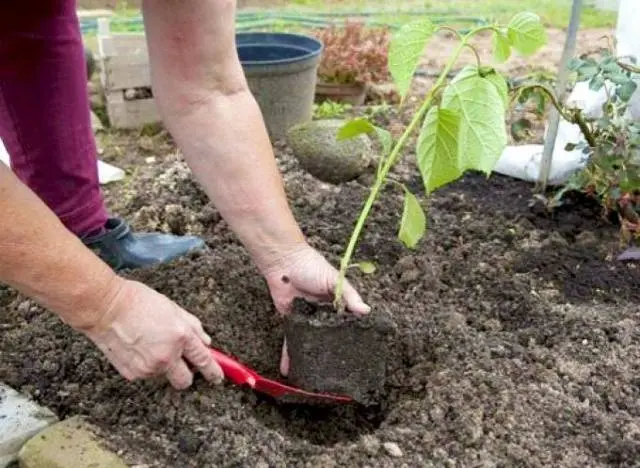
You will learn how to propagate hydrangea with green cuttings from the video
Reproduction of hydrangea by dividing the bush
Hydrangea can be propagated by dividing the bush until the third decade of September or in early spring. If you plant divided bushes in early October or even later, the plants will not have time to take root enough, gain the necessary amount of nutrients and fully prepare for winter.
To propagate a hydrangea bush, you need to carefully dig it up. It is best to dig up the bush with a pitchfork so as not to damage the roots. The excavated plant is divided into small divisions. When dividing, special attention should be paid to the kidneys of renewal. There should be at least 2-3 of them on each division.
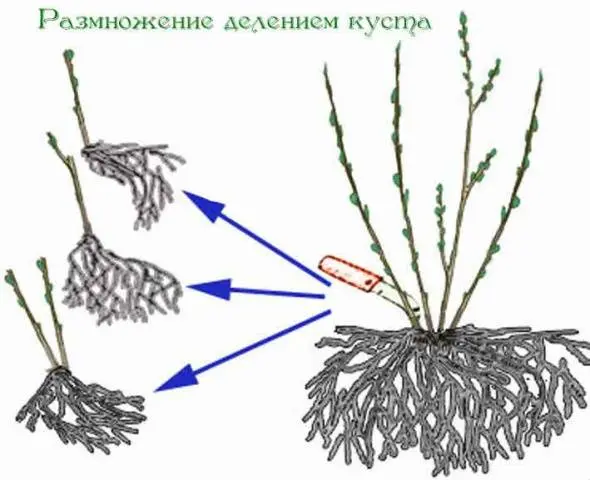
Transplant each separated part of the bush into pre-prepared planting pits. Do not forget that each hydrangea seedling must be watered abundantly. If autumn is generous with precipitation, then there is no need to water the shrubs. If precipitation is extremely rare in the autumn period, the plants must be watered every day or every other day.
There is a second way to divide the hydrangea bush, but without digging it up. Carefully make a small dig at a distance of 15-18 cm from the extreme shoots. Carefully separate part of the bush along with the roots and cut off the roots leading from the branches with a clean pruner. The separated part must be planted immediately.
This method of dividing the bush is more gentle. Moreover, large and large shrubs can be rejuvenated in this way.
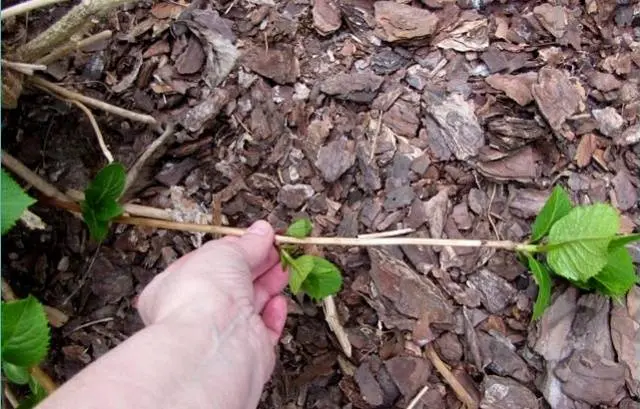
Propagation of hydrangea by layering
Gardeners recommend propagating hydrangea by layering in early spring or late autumn. Work should begin when the garden hydrangea has faded. It is best to combine this process with the preparation of shrubs for winter. The whole procedure will not take so much time and effort, and by spring, several young rooted shoots ready for transplantation will immediately form from one branch.
Interesting! Despite the fact that all parts of this plant contain poison, hydrangea roots have a powerful anti-inflammatory and wound-healing effect, and in the old days they were actively used for treatment.
- The soil around the hydrangea bush must be dug up. You should not go too deep, so as not to damage the root system. A depth of 15-18 cm will be enough. Level the ground carefully.

- From the bush in the form of a radius, make shallow, 1,5-2 cm grooves.
- One branch of hydrangea should be laid in one furrow.
- In several places, each shoot must be pressed to the ground with a small wooden horn or metal hooks.
- The upper part of the shoot, approximately 12-15 cm, should be left above the ground. it is desirable that the upper part stands vertically, without bending to the side.
- Sprinkle the hydrangea shoots with earth. Too thick a layer of soil should not be poured, otherwise it will be very difficult for young shoots to break through the compacted soil.
- Very soon, after 2-3 weeks, the first shoots will begin to appear above the ground. When the shoots reach a height of 8-10 cm, they must be spudded.

- Do not forget about regular watering not only of the main bush, but also of grooves with shoots.
When propagating hydrangeas by layering, it should be remembered that lignified branches in this case are undesirable.
It is possible to divide the layers into seedlings and transplant to another place only in early spring or a year later, in autumn.
This method is not often used by gardeners to grow hydrangeas. With the systematic care of the branches on the bush, there are not so many. But due to the ease of implementation and excellent results, it is still great for propagating hydrangeas.

Conclusion
As you can see, any of the hydrangea breeding methods described above is simple and accessible to every novice gardener. The only rule is not to forget about constant watering, because these delicate flowers are very fond of moisture. When the first ovaries of buds appear on self-grown hydrangea bushes, and subsequently it blooms with lush bright flowers, you will be able to admire the results of your painstaking work for a long period.










